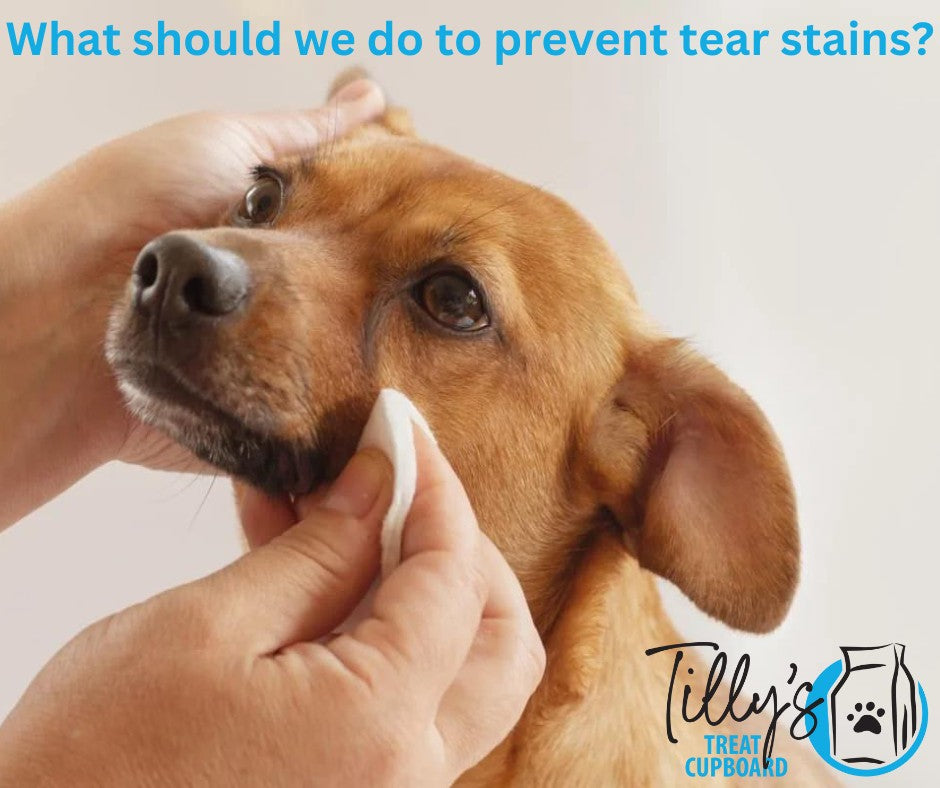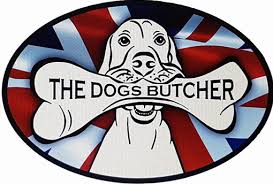
Low Down on Tear Stains
Tear stains can be unsightly, especially on dogs with white fur. But what causes them? How can we prevent them? And are they more than just a cosmetic problem?
What are tear stains?
Dogs, just like humans, produce tears. Tears keep the eyes lubricated and wash away irritants and debris.
Tears drain from the eyes into the nasal cavity through the nasolacrimal duct (tear duct). That is why your nose gets runny when you cry. If these ducts get blocked in someway, the tears run down the face instead of into the nose.
When the body breaks down red blood cells, porphyrins are released. These porphyrins contain iron molecules and are excreted in urine, salvia, bile and tears. When they come in contact with air, they oxidise (just like metal turning to rust). If there are excessive amounts of porphyrins released from the tear ducts, these molecules leave stains on the fur, especially if they can't drain into the nose efficiently.
Causes of tear stains
1. Breed
Short-nosed dogs and those with protruding eyes can be affected due to their facial structure. These contribute to narrow or crooked tear ducts that just don't work efficiently enough.
2. Hairs near eyes
Irritation caused by hairs too near the eye can cause excess production of tears. Ingrown eyelashes can also be a cause.
3. Chemicals
Chemicals cause a build up of toxins in the body which are released through urine, skin, ears and eyes.
We use too many chemicals and our dogs suffer from this.
Household cleaners, scented candles, aerosols, air fresheners, wash powders, cigarette smoke, e-cig vapour....the list goes on.
Other chemical products, such as flea, tick and worm medication, annual boosters, chemicals in tap water, antibiotic, other medication can all cause toxic build up that are released in the tears.
4. Diet
Food intolerances and carbohydrates lead to an inflammation in the gut. This triggers an immune response. The unwanted 'gunk' is released through the tears which causes staining. The inflammation can also lead to the tear ducts being swollen and blocked.
5. Infection and Disease
Certain diseases or bacterial infections can lead to tear stains. Again, linked to inflammation and the release of 'gunk' through the tear ducts.
Infections in or near the eye can be an underlying cause of tear stains.
7. Yeast
If a dog has a yeast infection, excessive tearing might occur. When the fur surrounding the eyes remains moist, yeast is able to grow making the condition worse.
8. Stress
Stress can trigger an immune response which leads to inflammation in the body. This inflammation can block the tear ducts.
Prevention of tear stains
Firstly, you need to find the cause. This might not be easy but look at your pet's history and their current health. Note if there seems a connection between foods eaten and excessive tear production. Do your dog's eyes water more after you've cleaned the floor or washed their bedding?
Here are some things you can do to find the cause and prevent tear staining:
1. A check up at the vets can rule out (or in) any infections or underlying causes.
2. Limit the use of chemicals in your house.
3. Titre test instead of annual vaccinations.
4. Use natural flea and tick preventions. Worm count instead of giving regular wormers.
5. Add probiotics to support the gut and improve the microbiome
6. Add natural anti-inflammatories such as Omega 3 (oily fish and algae oil are great choices) and turmeric.
7. Feed real, bio-available food Raw if possible or a high quality, low carb dry/wet food if not.
8. If you believe tear staining might be linked to food, start an elimination diet to work out which foods cause reactions.
9. Use filtered water.
10. Deal with any stresses you dog might be facing. Enlist the help of a behaviourist and try natural calming products.
11. Keep hair around the eyes trimmed and dry.
Removing tear stains
There are many natural remedies on the market. Some of the ones we stock include:
Euphrasia
Oculus Prime
TropiClean Tear Stain Remover
LUCAA Eye Cleaner
Homemade remedies
Some homemade remedies include:
Dilute apple cider vinegar in some water and carefully wipe the area with he solution.
Make some camomile tea and allow to cool. Use the tea on a some cotton wool to wipe the fur.
Apply a small amount of coconut oil to the stains to help soften and remove the stains.
The important thing to remember is, unless the cause is identified and dealt with, the tear stains will keep coming back.
- Choosing a selection results in a full page refresh.















